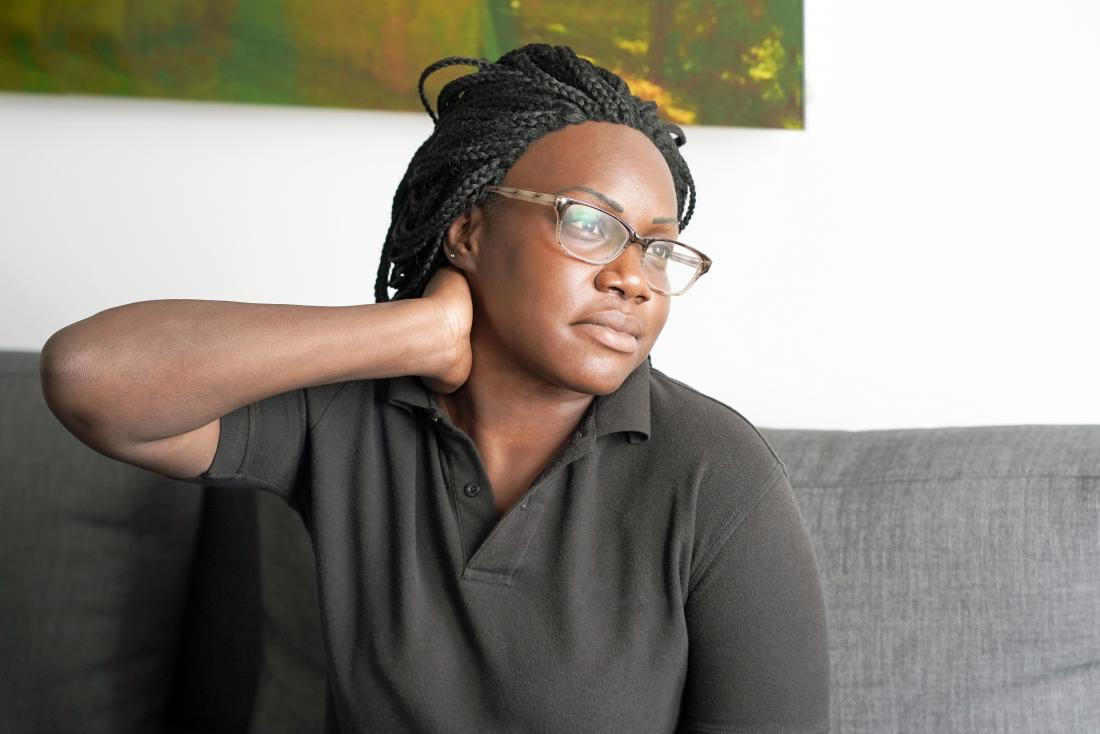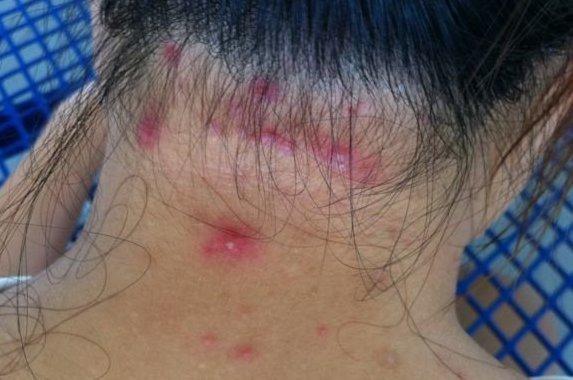Injuries are a common cause of bumps and lumps on the back of the head. As forceful impacts to the head can lead to brain injury, it is important for a person to watch for symptoms of concussion. People with a concussion or another severe head injury should seek medical attention.
Some other causes of bumps on the back of the head may also require a person to see a doctor.
In this article, we explore some possible causes of a bump on the back of the head. We also cover when to see a doctor.
Injury

A person may have a bump on the back of their head due to an injury.
One of the most common causes of a bump on the back of the head is an injury. Possible causes of head injuries can include:
- falling backward
- impacts or collisions during contact sports
- violence
- hitting the head against the headrest of a car seat in a traffic accident
- other types of accident
A blow to the back of the head can cause a scalp hematoma, which is where a collection of blood beneath the skin forms a semisolid bump. People sometimes refer to these bumps as “goose eggs.”
Treatment
People can usually treat minor head injuries at home with rest, over-the-counter pain relievers, and ice packs.
However, more serious injuries can cause a concussion. A severe concussion can lead to dangerous complications if a person does not receive treatment.
Symptoms of concussion can include:
- confusion
- dizziness
- fainting
- nausea and vomiting
- problems with walking or balance
- a severe headache
- slurred or affected speech
- vision problems
- loss of consciousness
People with symptoms of concussion should seek immediate medical attention.
It is advisable for anyone who has hit their head very hard or been in a serious accident to go to the emergency room even if they do not yet have symptoms of concussion. A doctor can perform tests to rule out concussion and other brain injuries.
Pilar cyst

Pilar cysts are more common in females.
Pilar cysts are a type of skin cyst that usually develops on a person’s scalp but can also occur on the neck. Doctors sometimes refer to pilar cysts as trichilemmal cysts.
These cysts are smooth, dense lumps that contain a buildup of keratin, which is the protein that the body uses to make hair and nails. Pilar cysts usually grow slowly, and they typically vary between 0.5 and 5 centimeters in diameter.
Pilar cysts are more common in females than males and can sometimes run in families.
Treatment
Pilar cysts are generally harmless and asymptomatic, but they can sometimes be painful. If a cyst is not causing symptoms, treatment may not be necessary.
However, if a pilar cyst is causing discomfort or other problems, a doctor may recommend surgically removing it.
Lipoma
A lipoma is a soft, fatty growth that can develop underneath the skin. Lipomas can occur anywhere on the body, including the back of the head and neck.
These bumps can vary in size, but they are not usually painful. A lipoma will typically feel soft and rubbery, and it may move around when a person presses down on it.
Doctors do not fully understand what causes lipomas, but they occur most often in people aged 40 to 60 years and are slightly more common in males than females.
Treatment
Lipomas are generally harmless and usually do not require treatment. However, if a lipoma becomes very large or is causing a person problems, a doctor may recommend surgical removal.
Doctors may also suggest removal if they are uncertain whether or not the bump is a lipoma.
Bone spur
A bone spur, also called exostosis, is a bony outgrowth that can develop around a joint. Bone spurs can occur in the neck and the back of the head but can also form on any bone in the body.
Bone spurs often develop near affected joints in people with osteoarthritis. Continual pressure to the back of the head, for example, in people who spend much of their time in bed, can also lead to bone spurs. However, there is not always an obvious cause.
Bone spurs feel like hard, immovable lumps. Although they are not always tender, these growths may cause pain if they rub against or put pressure on bones, tissues, or nerves.
Treatment
Bone spurs do not usually require major treatment. If they are causing a person pain or other problems, a doctor may recommend:
Folliculitis

Symptoms of folliculitis can include itching and soreness.
Image credit: lforlav, 2011
Folliculitis is a condition in which hair follicles become inflamed, commonly due to infection. The inflammation can cause a pus-filled bump that may resemble a pimple and can grow larger.
Symptoms of folliculitis can include:
- itching
- redness
- soreness
- a white head on top of the bump
Treatment
Folliculitis often clears up on its own if a person avoids its triggers, which include spending time in a hot tub and wearing tight clothing. Some people may find relief from applying a warm compress to the affected area several times a day.
For people with more severe folliculitis, a doctor may recommend oral antibiotics or prescription creams or ointments.
Skull base tumors
In rare instances, a bump on the back of the head can be a bone tumor. One of the more common types of cancerous skull tumor is a chordoma, which is a tumor that can grow from the bones at the base of the skull.
Small chordomas typically do not cause noticeable symptoms. However, symptoms of larger chordomas may include:
- walking and balance difficulties
- headaches
- hearing problems
- visual disturbances
It is possible for chordomas to spread to other parts of the body.
Treatment
The treatment for a skull bone tumor will depend on multiple factors, including whether the tumor is benign or cancerous, the size of the tumor, the location of the tumor cells, and other individual variables.
When to see a doctor
It is important to see a doctor for a bump on the back of the head if it:
- seems to be getting larger or is worsening
- is causing severe pain or other problems
- is producing pus or discharge
- is warm to the touch or the surrounding area is red
People who have severe head injuries or have been in a serious accident should go to the emergency room.
Seek immediate medical attention if any of the following symptoms occur following a head injury:
- loss of consciousness, lethargy, or seizures
- dizziness
- persistent vomiting
- clear or bloody discharge coming from the ears or nose
- different sized pupils in the eyes
- slurred speech, confusion, or memory loss
- balance or walking difficulties
Summary
Injuries are a common cause of bumps on the back of the head. People can usually treat mild head injuries at home. However, people with severe head injuries or symptoms of concussion should seek immediate medical attention.
Other causes of bumps on the back of the head can include cysts, fatty growths, inflamed hair follicles, and bone spurs. People should see a doctor for any bump that is causing problems or seems to be getting larger or worse.
